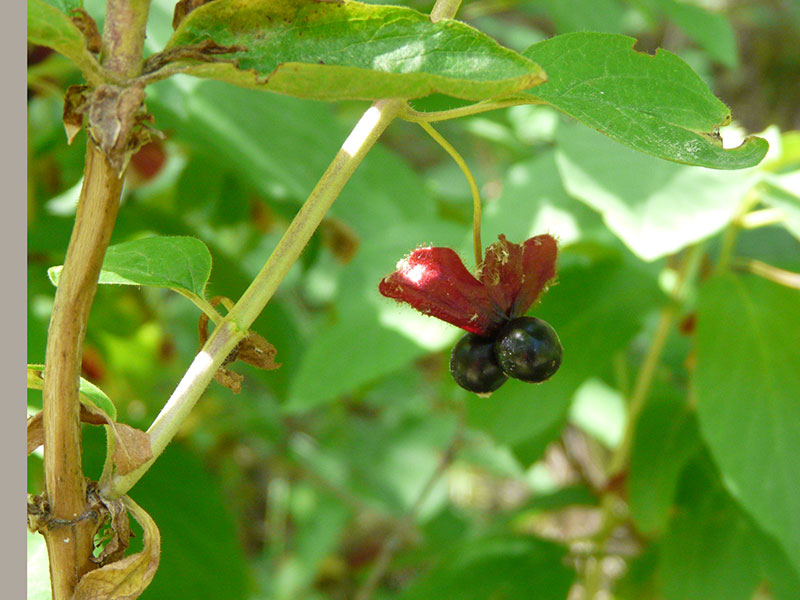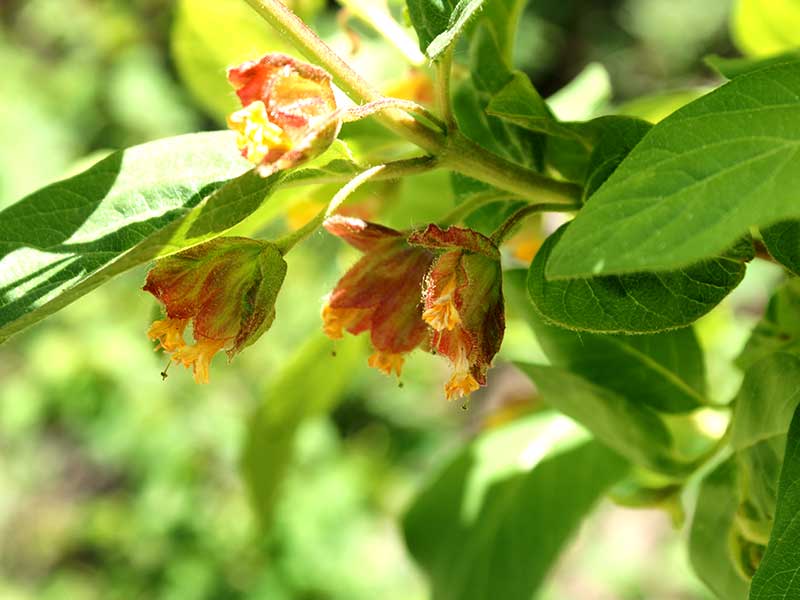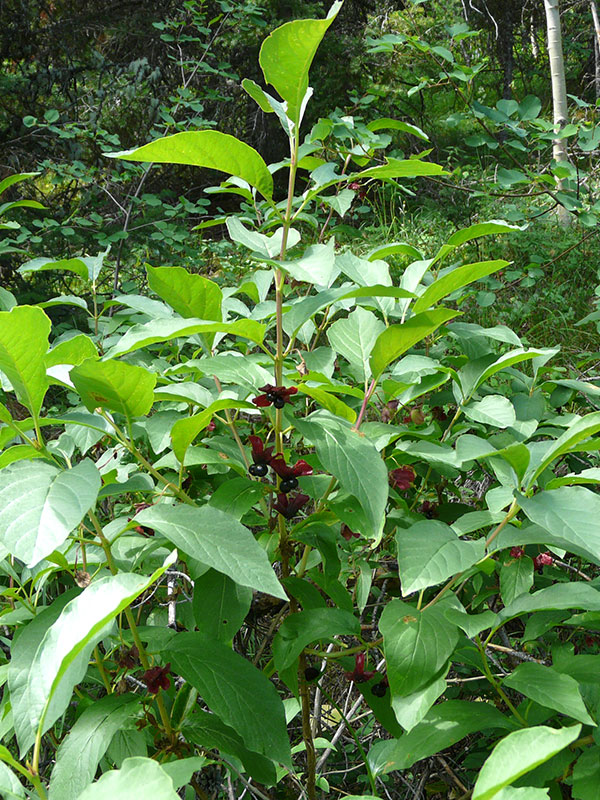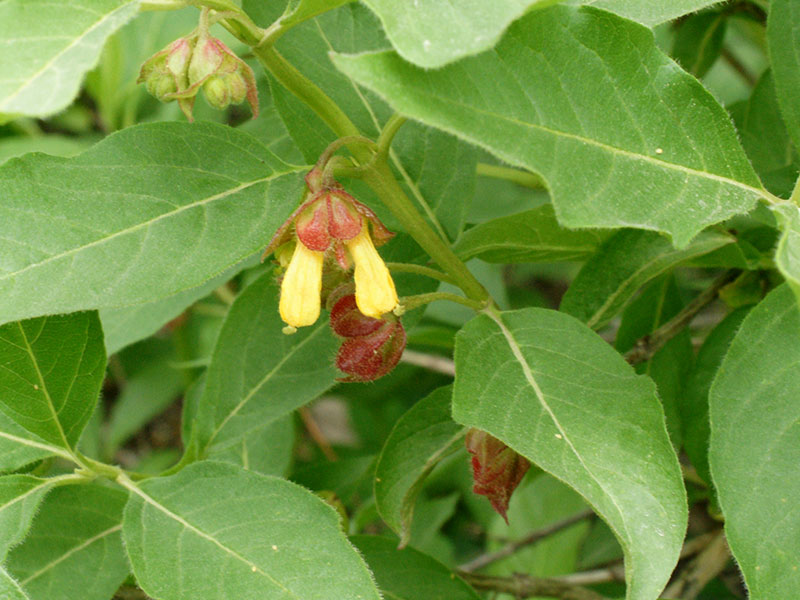Lonicera involucrata / twinberry honeysuckle
- flowers – inconspicuous, paired, yellow, bell-shaped with green bracts
- leaves – opposite, oval, often hairy beneath
- fruit – a pair of blue-black/purple berries with red, winglike bracts
- multi-stemmed shrub – to 15 feet tall
Synonyms: Distegia involucrata, Xylosteum involucratum.
Also known as: black twinberry, twinberry, bearberry honeysuckle, bush honeysuckle, bracted honeysuckle, four-line honeysuckle
See also: Lonicera utahensis / Utah honeysuckle
Twinberry honeysuckle is a shrub, often found along water courses throughout the Valley. Its flowers – twinned, yellow bells – are pretty obvious once you look at the plant, but similar to a number of other species. They appear in the spring. The flowers are subtended by a pair of green bracts that will turn red as they age.
The thing that really attracts your attention to this plant is its quite distinctive fruit. The fruit appears by mid-summer and is a pair (twins) of blue-black berries. Whether these are edible or not, or even poisonous, seems to be a matter of question. The fruit is accompanied by two small red leaves (bracts). Together these are known as an “involucre” and give the species its Latin name.
As a shrub, twinberry honeysuckle stands up to 15-ish feet tall. The young twigs are 4 angled, i.e. sort of square. They are often found along stream banks and similarly moist areas, preferring well-drained soil that may be seasonally wet. Although it is often found in the shade, or part-shade, it can tolerate full sun.
| Color | |
|---|---|
| Family | |
| Blossom size | |
| Inflorescence size | |
| Inflorescence type | |
| When? | |
| Where? |



